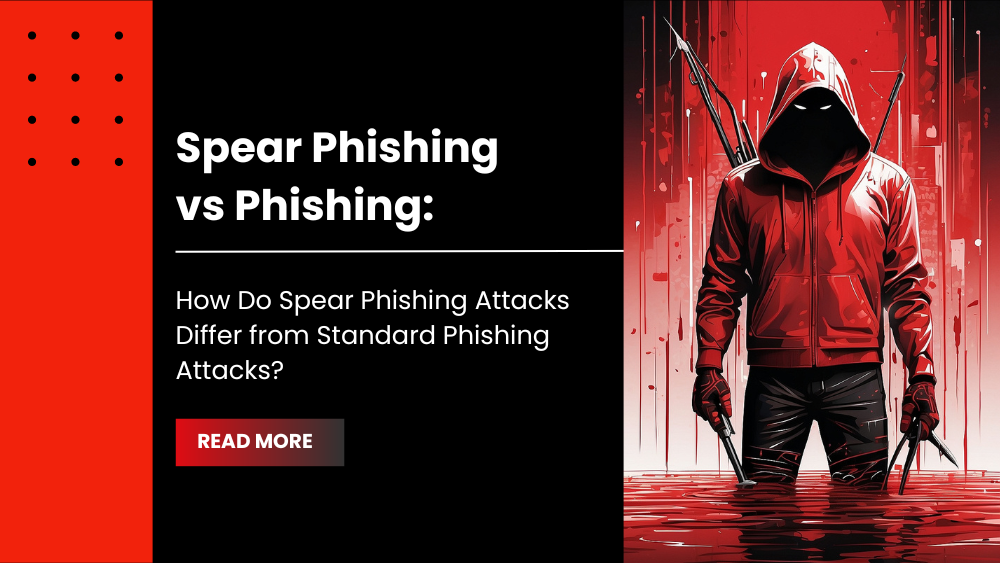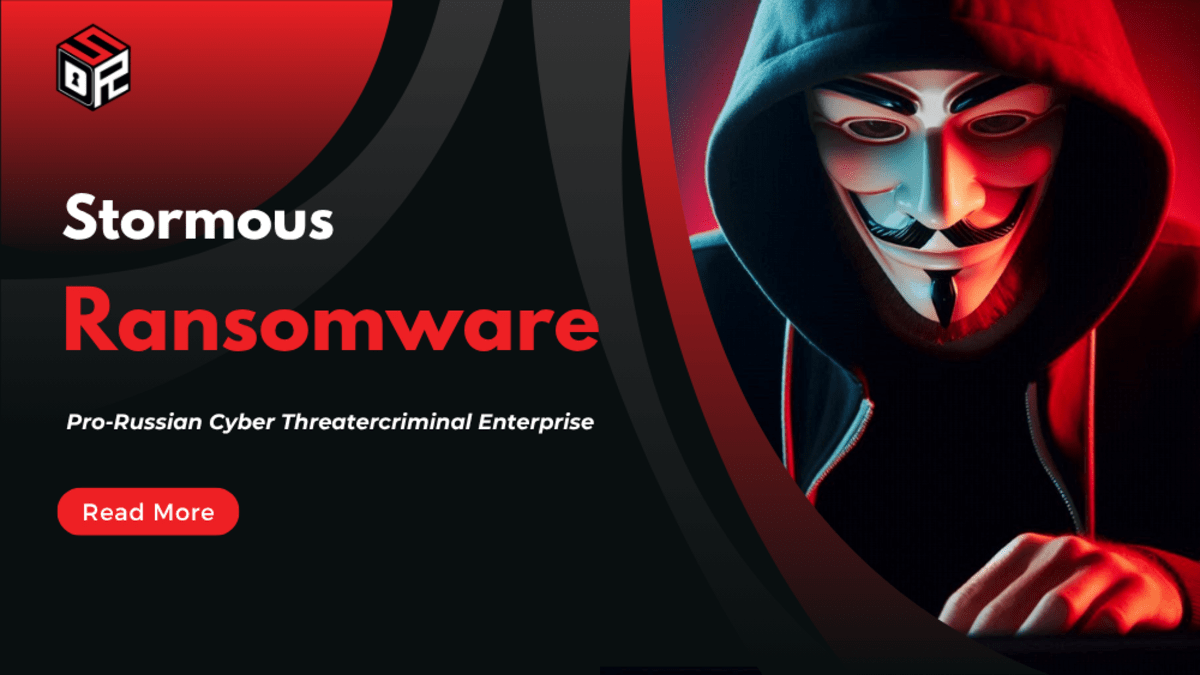In today’s digital landscape, where communication is predominantly virtual, the threat of phishing attacks—especially spear phishing—has escalated.
Phishing refers to the deceptive practice of sending fraudulent communications that appear to come from a reputable source, typically through email. However, as cybercriminals become more sophisticated, they have developed more targeted and personalized attacks known as spear phishing. Unlike the broad net cast by phishing, spear phishing hones in on a specific individual or organization to steal confidential information or gain unauthorized access to systems.
In addition to these, there are other forms of phishing attacks such as smishing and phishing through deceptive URLs, each with their unique tactics and prevention measures. Moreover, the tools used in spear phishing attacks are becoming increasingly advanced, making these attacks harder to detect and prevent. Therefore, understanding these tools, along with the tactics employed by attackers, is crucial for maintaining robust cybersecurity practices.
This blog aims to delve into these topics, providing valuable insights into phishing and spear phishing, their differences, and the tools used in these attacks. This exploration is more than theoretical—it’s a practical guide to empower readers in safeguarding their digital identities.
We aim to equip you with knowledge to outsmart those seeking to exploit vulnerabilities. Join us on this journey of cybersecurity awareness, and understand spear phishing vs phishing to build a robust defense against evolving cyber threats.
What is Phishing?

Phishing is a form of cyber-attack that has been around for quite some time, yet it remains one of the most prevalent and damaging threats in the digital world. The term “phishing” is derived from the word “fishing,” as these attacks involve casting a wide net in the hopes of catching unsuspecting victims.
At its core, phishing involves the use of deceptive emails or other forms of communication that appear to be from a legitimate source. These communications are designed to trick individuals into providing sensitive information, such as usernames, passwords, credit card numbers, or other personal details. This information can then be used for malicious purposes, such as identity theft or financial fraud.
Phishing attacks often rely on social engineering techniques to convince the recipient of the legitimacy of the communication. For example, a phishing email might appear to be from a well-known company or service provider, complete with official logos and seemingly valid contact information. The email might ask the recipient to confirm their account details or respond to a supposed security alert.
While phishing attacks can be quite sophisticated, there are often signs that can help identify them. These include poor grammar or spelling, generic greetings, and URLs that don’t match the supposed sender.
Common tactics used in phishing attacks include creating a sense of urgency, using fear tactics, or promising rewards. The targets are usually customers of financial institutions, online payment services, or social networking sites.
There have been several high-profile phishing attacks over the years. For instance, in 2011, an attack on RSA (a major cybersecurity company) led to the theft of data related to the company’s SecurID tokens, potentially impacting millions of users. In another case, the Epsilon email breach in 2011 resulted in a massive phishing attack after hackers stole the email addresses of customers from more than 100 companies.
While phishing is a significant threat, it’s important to note that there are many forms of phishing like smishing, and URL phishing, each with their unique characteristics. Furthermore, the tools used in spear phishing attacks are becoming increasingly sophisticated, adding another layer of complexity to the cybersecurity landscape.
In the following sections, we will delve deeper into these topics, providing a comprehensive understanding of phishing and its various forms.
What is Spear Phishing?

Spear phishing is a more targeted and sophisticated form of phishing. While standard phishing attacks aim to trick a large number of people into revealing sensitive information, spear phishing attacks are highly personalized and aimed at a specific individual or organization.
The key distinction between spear phishing and standard phishing lies in the level of detail and personalization involved in the attack. Spear phishing emails often include personal information about the target, such as their name, position, or other details that make the email seem more legitimate and convincing. This information is often gathered through careful research or previous attacks, making spear phishing a highly targeted form of phishing.
The targeted nature of spear phishing attacks makes them particularly dangerous. Because the emails are so well-crafted and personalized, they can be very difficult to identify as malicious. This makes spear phishing a significant threat to individuals and organizations alike.
There have been several high-profile spear phishing incidents in recent years. For example, in 2016, a spear phishing attack on the Democratic National Committee (DNC) led to the theft of thousands of emails, which were later published online. In another case, a series of spear phishing attacks targeted several multinational corporations, leading to significant financial losses.
Spear Phishing vs Phishing: What’s the Difference?

When comparing spear phishing vs phishing, it’s important to understand the differences in tactics, targeting, personalization, and impact on individuals and organizations.
Tactics: Phishing attacks typically involve sending out mass emails that appear to come from a trusted source in an attempt to trick recipients into revealing sensitive information. On the other hand, spear phishing attacks are highly targeted and involve a significant amount of research on the intended victim. The attacker uses this information to craft a personalized message that is more likely to deceive the recipient.
Targeting and Personalization: Phishing attacks are usually broad and aim to reach as many people as possible. In contrast, spear phishing attacks are highly targeted, often focusing on a single individual or organization. The level of personalization in spear phishing attacks is much higher than in standard phishing attacks, with emails often containing personal information about the target to make them appear more legitimate.
Impact: Both phishing and spear phishing can have severe consequences for individuals and organizations. Victims of these attacks can suffer financial loss, identity theft, and damage to their reputations. However, because spear phishing attacks are more sophisticated, they can often lead to more significant damage. For example, a successful spear phishing attack can lead to a serious breach of a company’s network, resulting in the loss of sensitive data. This in turn can lead to severe penalties from regulators and worse, cause business closure.
Comparing Smishing and Phishing

Smishing, a portmanteau of ‘SMS’ and ‘phishing’, is a form of phishing that involves the use of text messages. Instead of using email, like in traditional phishing or spear phishing attacks, smishing attacks are carried out via SMS. The attacker sends a text message to the victim, often creating a sense of urgency or fear to trick the victim into revealing sensitive information or clicking on a malicious link.
Since smishing uses text messages, it can make smishing attacks more difficult to detect, as people often trust text messages more than emails. Furthermore, text messages are typically shorter and less detailed than emails, which can make it harder for the victim to identify signs of a scam.
The risks and vulnerabilities associated with smishing are significant. Additionally, smishing attacks often target mobile devices, which may not have the same level of security protection as desktop computers. This can make it easier for attackers to install malware or steal sensitive information.
What is URL Phishing?

URL phishing involves the use of deceptive URLs to trick users into visiting malicious websites. These URLs often appear to be legitimate, but they lead the user to a site controlled by the attacker. Once on the site, the user may be tricked into entering sensitive information, such as login credentials or credit card details, which the attacker can then steal.
There are several techniques used in deceptive URLs. One common method is typosquatting, where the attacker creates a URL that is very similar to a legitimate one, but with a small typo that the user might not notice. Another technique is the use of subdomains to make the URL appear to be from a trusted source. For example, the URL ‘www.yourbank.login.com’ might appear to be a login page for your bank, but it’s actually a page on the ‘login.com’ domain.
Identifying and protecting against URL phishing requires vigilance and a good understanding of how URLs work. Here are some tips:
- Always check the URL before clicking on it. Look for typos or other signs that it might not be legitimate.
- Be wary of URLs that come in unsolicited emails or text messages.
- Use a web browser with built-in phishing protection. These browsers can often detect deceptive URLs and warn you before you visit the site.
- Keep your computer and web browser up-to-date with the latest security patches.
- Always have endpoint protection like ESET smart security that scans your incoming and outgoing traffic for malicious URLs before opening them.
Commonly Used Spear Phishing Tools

Spear phishing attacks, being more targeted and personalized than traditional phishing, often require the use of specialized tools. These spear phishing tools can range from simple email spoofing tools to more complex software that can automate the process of sending out spear phishing emails.
Spear phishing tools often include features for collecting information about the target, crafting convincing emails, and tracking the success of the attack. Some tools even offer templates for common spear phishing scenarios, such as a fake security alert from a well-known company.
Email Spoofing Tools: These tools allow attackers to send emails that appear to come from a trusted source. By altering the email header, attackers can make it seem like the email is coming from a different sender. An example of such a tool is Spoofy.
Website Cloning Tools: These tools are used to create a malicious website that looks almost identical to a legitimate one. The cloned website is then used to trick victims into entering their sensitive information. Google Chrome Developer Tools, and HTTrack Website Copier is an example of a tool that can be used for website cloning.
Information Gathering Tools: Before launching a spear phishing attack, attackers often gather information about their target. This can be done through various means, such as social media stalking or even through previous phishing attacks. The gathered information is then used to personalize the spear phishing email, making it more convincing. An example of such tool is WHOIS.
Automated Spear Phishing Tools: Some advanced spear phishing tools can automate the entire process of launching a spear phishing attack. These tools can automatically gather information about the target, craft a personalized spear phishing email, and even track whether the target fell for the attack.
Examples of such tools include:
- Socialphish
- Shell Phish
- Zphisher
- Blackeye
- King Phisher
- Blackphish
- Ghost Phisher
- Hidden Eye
Countermeasures and Security Best Practices

Protecting against spear phishing attacks requires a combination of technical countermeasures and user education.
Technical countermeasures can include the use of email filters that can detect and block spear phishing emails, and security software that can detect and remove malware.
User education is also crucial, as the most effective defense against spear phishing is the ability to recognize and avoid these attacks.
This can include training on how to recognize suspicious emails and links, and the importance of not revealing sensitive information in response to an unsolicited email.
Here is a checklist:
Comprehensive Employee Training
- Regularly educate employees on spear phishing tactics
- Emphasize skepticism and caution with unexpected emails
Implement Multi-Factor Authentication (MFA)
- Enforce MFA for all accounts and systems
Email Filtering and Authentication Protocols
- Deploy advanced email filtering solutions
- Implement authentication protocols like DMARC
Regular Software Updates and Patch Management
- Keep all software, including antivirus, updated
- Mitigate vulnerabilities exploited in spear phishing
Vigilant URL Monitoring
- Educate users on scrutinizing URLs before clicking
- Implement URL filtering tools to detect and block malicious links
Data Encryption and Secure Communication Channels
- Encourage the use of encrypted communication
- Employ end-to-end encryption for emails and messaging
Incident Response and Reporting Procedures
- Establish clear incident response guidelines
- Encourage prompt reporting of suspicious activities
Continuous Security Audits and Assessments
- Conduct regular security audits
- Identify and address potential vulnerabilities proactively
Conclusion
In this digital age, understanding the nuances of phishing and its various forms, including spear phishing, smishing, and URL phishing, is crucial. The sophistication of these attacks and the tools used are ever-evolving, making vigilance and continuous learning our strongest defense.
As we navigate through the digital world, it’s crucial to enhance our cybersecurity practices. This includes being cautious of unsolicited emails, checking the legitimacy of URLs before clicking, and keeping our devices and software up-to-date with the latest security patches.
Remember, knowledge is power. The more we know about these threats, the better equipped we are to defend against them. Stay safe, stay informed, and stay vigilant.






